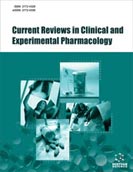Abstract
Background: Opioid analgesics used to treat pain can cause respiratory depression. However, this effect has not been extensively studied, and life-threatening, opioid-induced respiratory depression remains difficult to predict. We tested the ventilatory response to hypercapnia for evaluating the pharmacodynamic effect of a drug on respiratory depression.
Methods: We conducted a randomized, placebo-controlled, double-blind, crossover study on 12 healthy adult males. Subjects received 2 treatments (placebo and immediate-release oxycodone 30 mg) separated by a 24-hour washout period. Subjects inhaled a mixture of 7% carbon dioxide, 21% oxygen, and 72% nitrogen for 5 minutes to assess respiratory depression. Minute ventilation, respiratory rate, tidal volume, flow rate, end-tidal CO2, and oxygen saturation were recorded continuously at pre-dose and 30, 60, 120, and 180 minutes post-dose. The primary endpoint was the effect on the ventilatory response to hypercapnia at 60 minutes post-dose, as assessed by the slope of the linear relationship between minute ventilation and end-tidal CO2.
Results: At 60 minutes post-dose, subjects had a mean slope of 2.4 in the oxycodone crossover period, compared to 0.1 in the placebo period (mean difference, 2.3; 95% CI: 0.2 to 4.5; p = 0.035). Statistical significance was likewise achieved at the secondary time points (30, 120, and 180 minutes post-dose, p <0.05).
Conclusions: This model for testing ventilatory response to hypercapnia discriminated the effect of 30 mg of oxycodone vs. placebo for up to 3 hours after a single dose. It may serve as a method to predict the relative effect of a drug on respiratory depression.
Keywords: Ventilatory response, hypercapnia, respiratory depression, experimental model, opioids, analgesics.
[http://dx.doi.org/10.1097/ALN.0b013e3181c38c25] [PMID: 20010421]
[http://dx.doi.org/10.2147/TCRM.S8121] [PMID: 20057895]
[http://dx.doi.org/10.1001/jamainternmed.2014.8071] [PMID: 25686208]
[http://dx.doi.org/10.1111/pme.12777] [PMID: 26077738]
[http://dx.doi.org/10.1093/pm/pnx009] [PMID: 28340046]
[PMID: 23511694]
[http://dx.doi.org/10.1213/ANE.0000000000002496] [PMID: 29049118]
[http://dx.doi.org/10.1056/NEJMsa064115] [PMID: 17215533]
[PMID: 25951678]
[http://dx.doi.org/10.1080/105294199277860] [PMID: 10386329]
[http://dx.doi.org/10.1016/S0895-4356(00)00314-0] [PMID: 11297884]
[http://dx.doi.org/10.1002/sim.3998] [PMID: 21170915]
[PMID: 27996932]
[http://dx.doi.org/10.1056/NEJM197505222922106] [PMID: 1128555]
[http://dx.doi.org/10.1093/bja/aex295] [PMID: 29029015]
[http://dx.doi.org/10.1038/sj.clpt.6100018] [PMID: 17186000]
[http://dx.doi.org/10.1038/clpt.2009.194] [PMID: 19907420]
[http://dx.doi.org/10.1046/j.1365-2044.1999.00946.x] [PMID: 10460553]
[http://dx.doi.org/10.1097/ALN.0000000000001505] [PMID: 28170358]
[http://dx.doi.org/10.1111/j.1365-2044.2010.06498.x] [PMID: 20712805]
[http://dx.doi.org/10.1093/pm/pnz122] [PMID: 31165885]
[http://dx.doi.org/10.1073/pnas.1115231108] [PMID: 22106286]
[http://dx.doi.org/10.1016/j.cell.2017.10.035] [PMID: 29149605]

































